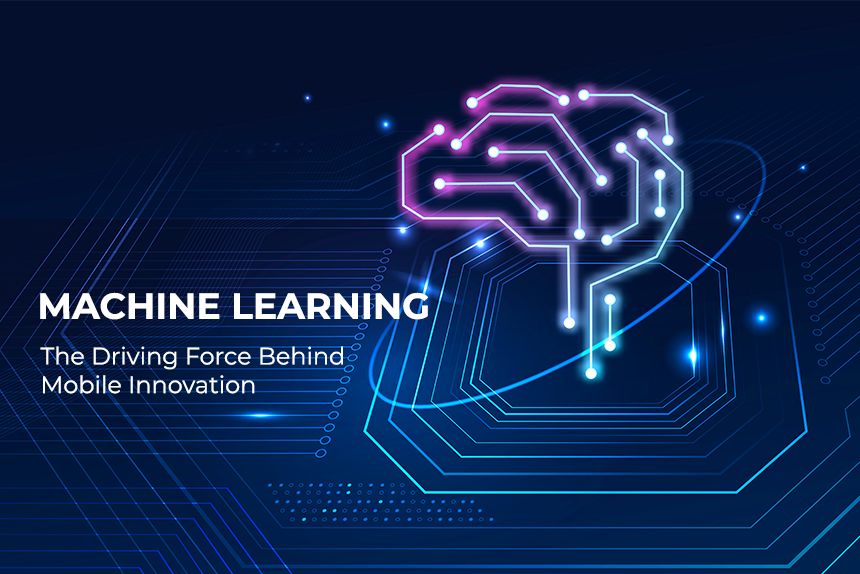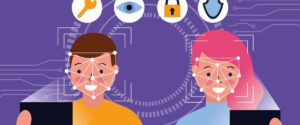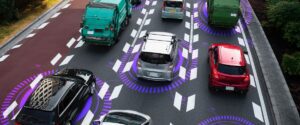
Machine Learning: The Driving Force Behind Mobile Innovation
Mobile technology has advanced tremendously over the past decade. The smartphones we carry today have capabilities that would have been considered science fiction just a few years ago. But what is driving this rapid pace of innovation in the mobile domain? In large part, the answer is machine learning.
This burgeoning field, fueling a $614.23 billion mobile app market by 2025, empowers systems to learn and improve from experience without being explicitly programmed.
Without machine learning, many of the innovations we now take for granted simply wouldn’t be possible.
Consider real-time translation, a feat made possible by ML algorithms crunching through massive datasets of languages.
Or imagine intelligent virtual assistants like Siri and Alexa, seamlessly understanding our voice commands thanks to the magic of natural language processing, another domain powered by ML.

Looking ahead, deeper integrations of ML into mobile operating systems, 5G networks, IoT ecosystems and devices will accelerate the pace of innovation even further.
We are only beginning to glimpse the transformative potential of machine learning and AI in the mobile sphere.
The mobile apps, gadgets and networks of the future will make today’s technologies seem primitive by comparison.
Any company seeking to push the boundaries of what’s possible in mobile needs to make machine learning central to its strategy.
After all, with over 3.5 billion smartphone users spending an average of 3 hours and 15 minutes on their devices every day, personalization and optimization powered by ML will be key to success.”
How Machine Learning is Powering Breakthroughs Across Mobile Apps, Devices, and Networks
Machine learning has revolutionised computer vision, allowing mobile cameras and apps to “see” and understand images and video.
From intelligent cameras that see the world like we do to virtual assistants that understand our every whisper, ML is fundamentally changing the way we interact with our phones.
How Machine Learning Enables Mobile Camera Advancements?
Take mobile cameras, for instance. No longer mere image capturers, they’re powered by ML algorithms that automatically adjust lighting, blur imperfections, and elevate ordinary snapshots to near-professional quality.
This $57.6 billion market by 2025 is fueled by our desire to capture and share stunning visuals, and ML sits at the core of this transformation.

But that’s just the beginning. Augmented reality (AR), where digital elements seamlessly blend with our physical surroundings, is exploding in popularity, with over 1 billion AR filters downloaded every month across platforms.
Imagine trying on clothes virtually, seeing historical landmarks come alive through your screen, or navigating unfamiliar streets with AR directions overlaid on your viewfinder – all thanks to the magic of ML-powered computer vision.
Natural Language Processing: Machine Learning Powers Conversational Interfaces in Mobile
Our devices are learning to speak our language, too. Virtual assistants like Siri and Alexa are evolving from rudimentary voice recorders to truly conversational companions.

By 2024, half of all smart assistants are expected to be voice-activated, reflecting our growing reliance on NLP to navigate our digital lives.
And let’s not forget real-time translation apps, poised to reach a $1.76 billion market by 2027 breaking down language barriers and fostering global connections with each translated word.
Predictive Analytics: Personalization and Recommendations Driven by Machine Learning
ML isn’t just about understanding the present; it’s about predicting the future. Personalised recommendations powered by ML can increase conversion rates by a staggering 30-40%.
Imagine music apps anticipating your next earworm, newsfeed algorithms surfacing stories you’ll devour, and shopping carts pre-filled with items you didn’t even know you craved – all orchestrated by the invisible hand of ML.

The global predictive analytics market, projected to reach $31.9 billion by 2026 speaks volumes about the power of tailoring experiences to our individual needs.
Fraud Detection and Cybersecurity: Leveraging Machine Learning for Enhanced Mobile Security
In the digital age, security is paramount. But fret not, ML is on guard! Advanced algorithms can detect fraudulent activity across networks, stopping 80% of attempts before they even occur.

And with the global cybersecurity market set to reach $432.8 billion by 2025 it’s clear that ML is playing a crucial role in keeping our digital lives safe.
Autonomous Vehicles: The Role of Machine Learning in Self-Driving Cars
Buckle up, because the future of transportation is autonomous. Self-driving cars rely heavily on ML for visual perception, sensor fusion, and decision-making.
By 2024, the autonomous vehicle market is projected to reach $181.6 billion, driven by algorithms that can predict pedestrian behaviour with a 93.6% accuracy rate.

Imagine a world where traffic jams are a thing of the past, accidents are minimised, and getting around is as effortless as stepping into your living room.
This is just a glimpse into the transformative power of ML in mobile technology. The future is brimming with possibilities, from personalised healthcare powered by wearables to AI-driven social robots enhancing our daily lives.
One thing is certain: as ML continues to evolve, our mobile devices will become even more intelligent, intuitive, and indispensable. So, embrace the journey – the future of mobile is powered by machine learning, and it’s going to be incredible.
Why has machine learning become integral to mobile innovation?
Availability of Big Data
The vast amount of data generated by mobile users provides invaluable training data to develop accurate machine learning models. About 50 quintillion bytes of data, providing invaluable training material for Machine Learning models.
With more robust training data, the models become better at tasks like computer vision, prediction, and language understanding.
Improved On-Device Hardware
Smartphones and other mobile devices now have the powerful processors, graphics chips, and storage needed to run sophisticated Machine Learning models right on the device itself.
This enables real-time ML capabilities without relying on the cloud. The variety of sensors on mobiles also provide rich data for ML models.
Demand for Intelligent Experiences
According to a recent survey, over 80% of mobile users now prefer experiences that are tailored to their individual needs and preferences.
Machine Learning delivers features like virtual assistants, recommendations, automated editing, and more.
This rising demand for intelligent mobile experiences is a major driving force behind the adoption of ML by developers.
Conclusion
In summary, machine learning has clearly emerged as the driving force empowering breakthrough innovations across the mobile landscape.
ML is fundamentally transforming mobile apps, devices, networks and services by enabling capabilities like computer vision, natural language processing, real-time personalization, enhanced security, autonomous transportation, and much more.
Looking to the future, the integration of ML into the core of mobile technology will only accelerate.
5G networks will allow blistering speeds for ML models. On-device ML chips will bring new levels of real-time intelligence.
ML advancements in IoT and edge computing will drive immersive experiences. There is no limit to the innovations ML may unlock next for mobile – from transforming healthcare to redefining entertainment and leisure.
For any company seeking to push the boundaries in mobile technology, leveraging ML is now absolutely essential. The winners of the future will be those who harness ML to create the next generation of intelligent mobile solutions.
Companies like Infin Mobile Solutions have already proven how ML can power innovations like personalised fitness apps. The opportunities are endless for organisations willing to embrace ML to keep pace with the breakneck speed of change in the mobile arena.
Contact mobile ML experts today to explore how ML can help drive your own mobile innovations.
FAQs
Are Machine Learning and Data Science the Same?
No, while closely related, they are distinct fields:
- Machine Learning: focuses on algorithms that learn from data to make predictions or decisions without being explicitly programmed.
- Data Science: is a broader field encompassing data cleaning, analysis, and visualisation to extract insights and knowledge from data. Machine learning is one of the tools used in data science.
Are Machine Learning and Deep Learning the Same?
No, deep learning is a specific subset of machine learning:
- Machine Learning: includes diverse algorithms like linear regression, decision trees, and support vector machines, often requiring feature engineering.
- Deep Learning: uses artificial neural networks with multiple hidden layers to automatically learn features from data, often excelling in complex tasks like image and speech recognition.
Can Machine Learning be Secure?
Like any technology, machine learning can be vulnerable to security threats. Concerns include:
- Adversarial attacks: manipulating data to mislead models.
- Data privacy: ensuring responsible use of personal data used for training.
- Bias: models reflecting prejudices present in training data.
Security techniques for machine learning focus on data quality, robust algorithms, and responsible data handling.
How Does Machine Learning Work?
There are multiple approaches, but the general steps involve:
- Data Acquisition: gather relevant data for the desired task.
- Data Preprocessing: clean and prepare the data for analysis.
- Model Selection: choose a suitable machine learning algorithm based on the task.
- Model Training: feed the data to the algorithm and adjust its parameters to learn patterns.
- Model Evaluation: assess the model’s performance on unseen data.
- Model Deployment: integrate the trained model into real-world applications.
How is Machine Learning Related to AI?
Machine learning is a branch of Artificial Intelligence (AI). AI aims to create intelligent systems, while ML focuses on algorithms that learn from data to improve their performance. Not all AI is ML, but most modern AI techniques rely on it.
How is Machine Learning Different from General Programming?
General programming involves explicitly instructing the computer on what to do for each possible scenario. Machine learning, instead, provides data and lets the algorithm discover patterns and relationships to make predictions or decisions.
What Can and Cannot Machine Learning Do?
Machine learning can excel at:
- Pattern recognition: image and speech recognition, spam filtering, etc.
- Prediction: customer churn, stock prices, etc.
- Decision making: fraud detection, medical diagnosis support, etc.
However, it cannot:
- Solve all problems: some tasks require reasoning and understanding beyond data-driven approaches.
- Be truly creative: while capable of generating novel outputs, it lacks true originality and inspiration.
- Replace human judgement: complex ethical decisions should involve human oversight.
Your point of view caught my eye and was very interesting. Thanks. I have a question for you.
Thank you for your sharing. I am worried that I lack creative ideas. It is your article that makes me full of hope. Thank you. But, I have a question, can you help me?
Your point of view caught my eye and was very interesting. Thanks. I have a question for you.